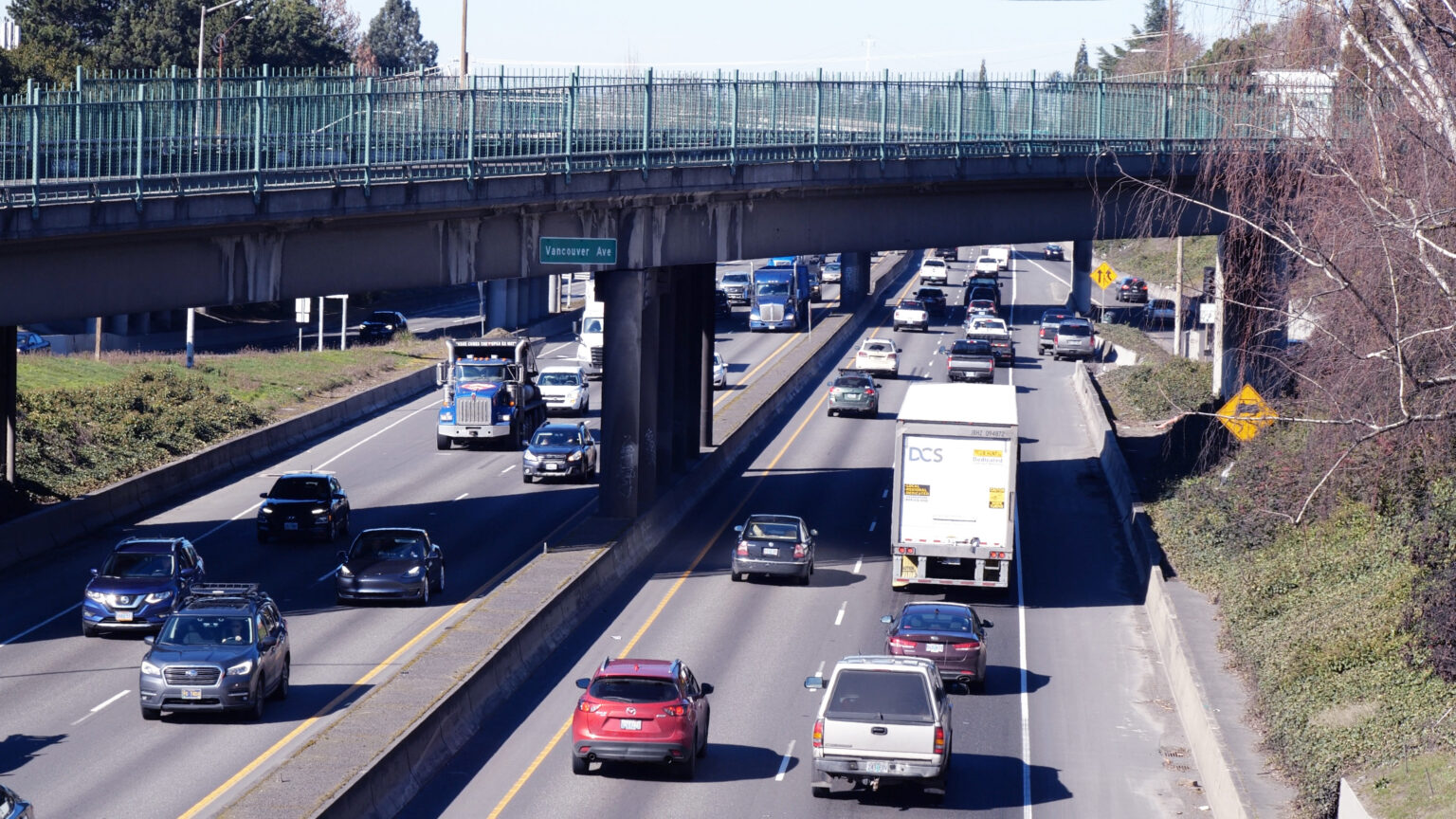Capitol Chatter: Statehouse security beefs up
Published 5:00 pm Thursday, January 13, 2022

- Capital Chatter square logo
When I began covering the Oregon Legislature full-time, I could enter the State Capitol anytime I wanted.
As a member of the Capitol press corps, I had a key. For example, that key once allowed me into the basement pressroom on a Saturday morning to catch up on work, accompanied by our son supposedly sleeping in his baby carrier. Oops. It seems our vocal son did not share my parenting vision of quietly bonding while working.
Still that around-the-clock access has been handy. I beat other reporters on stories not because I had more talent or smarts – I don’t – but because I outworked them. In the 1980s, I learned to be the last one in the pressroom each day, especially on Friday nights when state regulators tended to drop off press releases announcing the latest closures of insolvent banks. I sometimes came in on weekends to write in quiet or to check the press release dropbox.
Savvy state officials, such as Secretary of State Norma Paulus, periodically strolled through the pressroom to share news tips before heading home. Back then, security was so relaxed that Gov. Vic Atiyeh often ate lunch in the Capitol cafeteria with everyone else. If I wanted different food options, I could walk through the Capitol Mall tunnels to cafeterias in adjacent state buildings.
And because Senate President John Kitzhaber was not easy to catch, at the end of the day I’d occasionally hang out by his SUV – long before they were called SUVs – in the Capitol’s underground parking garage, hoping for a brief interview. Kitzhaber always grinned to see me, and sometimes he’d talk.
I still have a Capitol exterior key, an electronic one, as do hundreds of elected officials, staff members, journalists and others. But I long ago lost entrance to the tunnels and to the Capitol basement garage. I’ve encountered locked hallway doors into the legislative office wings. And around-the-clock access into the Capitol may disappear, although that’s no longer a journalistic necessity.
Legislative officials this week confirmed what had been reported previously: “Anyone entering the Capitol will be required to pass through a security checkpoint.” That entails walking through metal detectors staffed by security guards and having bags checked by hand or sent through an X-ray machine.
It’s about time. I’ll have to train myself to leave my little Swiss Army pocketknife behind.
The changes take effect Jan. 27. Despite the inconvenience, Oregon’s Capitol will remain comparatively open. In travels around the U.S., I’ve wandered freely into some state capitols but found others almost inaccessible. Thirty-three state Capitols already use metal detectors, according to the National Conference of State Legislatures.
The Capitol security changes were expected after the 2021 Legislature banned holders of concealed weapon permits from having their firearms in the Capitol. By the way, I hear legislative management was not keen on some security upgrades suggested by the legislative employees’ new union.
As for state government coverage, it too evolves. Fewer reporters work out of the Capitol pressroom, press releases arrive via email and social media, and anyone can watch legislative proceedings online. Though I drive by the Capitol every day or two, I’ve rarely been inside since the 2020 legislative session and the subsequent pandemic lockdowns.
Meanwhile, the Legislature’s presiding officers – House Speaker Tina Kotek, D-Portland, who is resigning as of Jan. 21, and Senate President Peter Courtney, D-Salem – ordered legislative employees to work remotely whenever possible during this week’s Legislative Days and the 2022 Legislature, which convenes next month. The reason: COVID-19.
Their memo to legislators and employees said: “The Capitol is diligently working to limit exposure of staff and community and to only designate staff as essential when necessary. This means your manager could determine that you are essential to be in the Capitol for a particular day or activity and then be returned to non-essential status.
“In order to keep the Capitol community safe, each of us needs to follow the safety and health rules including wearing face coverings at all times and avoiding close contact (closer than 6 feet for 15 minutes or more in a 24 hour period) whenever possible. Many of us are fortunate and able to work remotely and are not exposed, yet we are key to protecting those who must report to the building.”
Another positive COVID-19 case in the Capitol was reported last week.
Where does Kristof reside: The Oregon Supreme Court has agreed to take up the case of whether would-be Democratic gubernatorial candidate Nick Kristof qualifies as an Oregon resident. Secretary of State Shemia Fagan and the state Elections Division declared him ineligible to run.
Molly Woon, a spokeswoman for Fagan, disputed the notion in last week’s Capital Chatter that there was a political push to declare Kristof ineligible. “She received no pressure whatsoever, except from the public relations campaign his campaign ran,” Woon said of Fagan.
In contrast, a Capital Chatter reader in Central Oregon felt the description was accurate, writing: “In our view (over here!), he is a legitimate candidate, and represents new hope for Oregon — certainly in terms of dismantling what has become a 30-year Democratic bureaucratic monster.
Another reader, a tax accountant, wrote: “When I think of the definition of a resident, I center in on residency as defined for income tax purposes. … In none of the media stories I’ve read or heard do any of Mr. Kristof’s stated attributes of Oregon residency add up to him being a qualified Oregon resident for income tax filing purposes.”
Kristof said this week that the residency issue comes up “surprisingly rarely” in his discussions with voters. “People want to talk about affordable housing. They want to talk about homelessness. They want to talk about wages,” he told me.
Salazar kicked upstairs?: Sandy Mayor Stan Pulliam, a Republican candidate for governor, blasted President Joe Biden’s administration for appointing Margaret Salazar, the embattled director of Oregon Housing and Community Services, as the four-state regional director for the U.S. Department of Housing and Urban Development.
“This is the status quo of how things are done with entrenched bureaucrats in Oregon,” Pulliam said in a press release. “After months of Oregonians calling for her resignation for absolute incompetence in distributing federal rental assistance to Oregonians in need – The head of OHCS has failed upwards and now works with the Biden administration.”
In contrast, the White House press release called Salazar a national leader in affordable housing finance: “During her five-year tenure at the helm, OHCS tripled its production of affordable rental housing, created nearly 1,000 units of Permanent Supportive Housing statewide, deployed $500 million in emergency rental assistance, passed legislation to expand racial equity in homelessness programs, and expanded mortgage lending to homebuyers of color. Salazar led the agency to respond to the state’s historic 2020 wildfires with innovative modular developments and services for Oregon’s agricultural workers.”
Other gubernatorial candidate tidbits: Kotek unveiled her first campaign video. Smartly crafted, it centers on what she’s been called: tough. … Former Sen. Betsy Johnson released an impressive list of Democratic and Republican political leaders who endorse her independent candidacy. … Republican Rep. Christine Drazan heralded news stories that said Republicans have good reason to believe this could be the year that Oregonians elect their first Republican governor since Atiyeh.
“Salem’s success at the Legislature in recent years reflects a concerted effort to rebuild Capitol relationships.”





